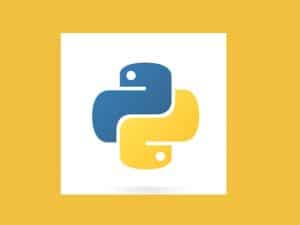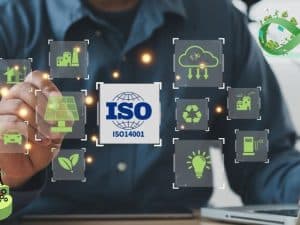APPLY PRINCIPLES OF RISK MANAGEMENT
- Description
- Curriculum
- FAQ
- Reviews
SUMMARY
This comprehensive course provides a thorough exploration of risk governance, drawing upon principles from various authoritative sources, including guidelines on good corporate governance, companies’ legislation, and codes of best practice such as the King Code, ISO 31000, and the COSO framework.
The course begins by emphasizing the importance and value of Enterprise Risk Management (ERM), highlighting its significance in bolstering strategic planning, informed decision-making, and organizational resilience. Participants will learn to articulate the role of risk management within their organizations, integrating risk management principles into their daily activities.
A core focus of the course is to equip participants with the knowledge and skills to develop and implement robust organizational risk management programs. This includes identifying key role players, assigning responsibilities, and establishing standardized procedures for identifying, assessing, managing, and monitoring a wide range of risks, spanning operational, financial, and strategic domains. Participants will gain a practical understanding of how to incorporate risk management into every project, considering both potential risks and opportunities.
Monitoring and assessing the effectiveness of implemented risk management procedures is another crucial aspect covered in the course. Participants will learn how to effectively monitor the performance of risk management strategies, assess their impact, and identify emerging risks. They will be able to measure performance against established indicators and mitigation plans, monitor changes in both the external and internal environments, and determine the influence of these changes on the strategic risk profile.
The course emphasizes the importance of transparent risk reporting and disclosure to stakeholders, equipping participants with the skills to effectively communicate risk information both internally and externally. This includes the preparation of comprehensive risk management statements for inclusion in annual reports.
Participants will be guided through the process of navigating common challenges in applying risk management principles, such as fostering a strong risk culture, securing sufficient leadership support, optimizing resource allocation, ensuring consistent processes, and addressing the complexity of interconnected risks. The importance of proactively identifying and managing emerging risks is also emphasized.
One of the key modules of the course focuses on developing a robust understanding of risk appetite and tolerance. Participants will learn about the roles these concepts play in decision-making and how to effectively communicate them within the organization and to stakeholders. The course will introduce various resources, including industry standards like ISO 31000 and the COSO Enterprise Risk Management Framework, as well as publications from professional organizations like the Risk Management Society (RIMS) and the Institute of Risk Management (IRM), to aid in developing and implementing effective risk appetite frameworks.
Compliance risk management forms a critical part of the course curriculum, underscoring the importance of ensuring compliance with applicable laws, regulations, and internal policies. Participants will learn to effectively oversee the management of compliance-related risks. Practical aspects such as identifying and cataloging relevant legislation and regulations, categorizing and prioritizing them, developing and implementing Compliance Risk Management Plans (CRMPs), and continuously monitoring compliance will be thoroughly covered.
The course also sheds light on the importance of business continuity management, emphasizing risk oversight and preparedness for rare events through Disaster Recovery Plans (DRP) and Business Continuity Management (BCM). The goal is to equip organizations with the tools and strategies to ensure the continuation of critical operations during crises and to strengthen overall organizational resilience.
Participants will gain insights into risk assurance and combined assurance, learning how to provide assurance on the adequacy and effectiveness of risk management practices through management reporting, disclosure of significant risk failures, and internal and external audit assessments. The benefits of adopting a Combined Assurance Model, including aligning assurance activities, minimizing disruptions, and enhancing governance and accountability, will be discussed.
Developing a robust culture of risk management is a key learning outcome of this course. Participants will learn effective strategies to promote a risk-aware culture through open communication, shared understanding of risk management principles, proactive risk identification and response, and continuous improvement of risk management processes.
Finally, the course will introduce participants to the concept of an ERM maturity model, illustrating different stages of risk management maturity – from initial uncertainty to achieving a state of informed wisdom. Participants will be able to assess their organization’s current risk management maturity level and identify areas for potential improvement.
This comprehensive course equips participants with the knowledge, skills, and tools to effectively manage risks, enhance organizational resilience, and make informed decisions that contribute to the achievement of strategic objectives.
-
3Principles of Enterprise Risk Management (ERM)Video lesson
The content outlines twelve core principles for effective enterprise risk management. These principles emphasize value creation, integration into organizational processes, and informed decision-making. A systematic and adaptable approach is stressed, alongside the importance of considering human factors and embracing transparency. Continuous improvement and reassessment are also highlighted as crucial components for successful risk management.
-
4Principles of Enterprise Risk Management (ERM)Quiz
This quiz tests understanding of the content material.
-
5Overview of Risk GovernanceVideo lesson
This course material examines the governance of risk, using South Africa as a primary case study. It explores the legal and regulatory frameworks underpinning risk management, referencing acts such as the Companies Act and Public Finance Management Act. The material also highlights the importance of good corporate governance drawing on various international codes and principles. Further examples from other countries illustrate the global application of these concepts, including constitutional and corporate legislation. Finally, the role of governing bodies in overseeing risk management and its integration into overall enterprise strategy is emphasized.
-
6Risk Governance - overviewQuiz
The quiz questions are designed to assess understanding of key principles and concepts related to risk governance, as presented in the sources
-
7Enterprise Risk Management (ERM) PolicyVideo lesson
This course material outlines an Enterprise Risk Management (ERM) policy. The policy establishes a commitment to risk management, defining roles and responsibilities at all levels of the organization. It details the governing body's oversight, including setting risk appetite and tolerance levels. Management's responsibilities include implementing and monitoring the risk management plan, while specific roles are assigned to the accounting officer, senior management, a risk officer, a compliance officer, and middle management.
-
8Enterprise Risk Management (ERM) policyQuiz
-
9ERM Framework and MethodologyVideo lesson
The course content outlines an Enterprise Risk Management (ERM) framework and methodology. It emphasizes the importance of tailoring ERM approaches to individual organizational needs, rejecting a "one-size-fits-all" solution. The framework defines governance structures and the necessary infrastructure, including processes, systems, and tools. A key component is a structured approach to identifying, assessing, managing, and monitoring risks. The content also mentions the ISO 31000 standard as a relevant ERM process. Ultimately, the goal is effective risk management within an organization.
-
10ERM Framework and MethodologyQuiz
Tests the learner on how much they have gathered from the lesson.
-
11Strategic Risk and Opportunity Identification and AssessmentQuiz
Assessment of learning for this section.
-
12Strategic Risk and Opportunity Identification and AssessmentVideo lesson
This content outlines a strategic risk management process. PESTLE analysis is used to identify external factors (political, economic, social, technological, legal, environmental) impacting the organization. Competitive analysis (Porter's Five Forces) assesses industry forces to inform strategic choices. The text also details a framework for opportunity identification and assessment, including probability estimations, and emphasizes risk mitigation only when demonstrably beneficial. Finally, it advocates for incorporating thorough risk analysis into board decision-making.
-
13Risk Identification at Tactical and Operational LevelsQuiz
Testing learning on "Risk Identification at Tactical and Operational Levels" section.
-
14Risk Identification at Tactical and Operational LevelsVideo lesson
This section outlines a comprehensive risk management process, emphasizing early risk identification in strategic projects and joint ventures as well as at operational level. Key aspects include prioritizing risk management throughout project lifecycles, involving internal audit functions, and employing various risk identification methods (interviews, workshops, scenario planning, and analytical techniques). The text stresses compromising project elements (time, budget, or functionality) upfront and including risk considerations in supplier selection. Finally, consistent communication and risk analysis are highlighted as crucial for successful project delivery.
-
15Assessment of RiskVideo lesson
This course content outlines a risk assessment process using a five-level scale for both likelihood and impact of risks. It details how to assess both inherent risks (before controls) and residual risks (after controls) and create a risk profile. A heat map visualization is suggested for prioritizing risks based on their likelihood and impact. The document also briefly mentions business continuity and maintaining a risk register. Essentially, it provides a framework for analyzing, rating and prioritizing risks within an organization.
-
16Risk AssessmentQuiz
Assessment of learning on the topic "Risk Assessment"
-
18Risk MonitoringVideo lesson
This training content outlines a risk management process emphasizing risk monitoring. The roles of the board and management in establishing and overseeing risk appetite are detailed, highlighting the importance of aligning risk appetite with strategic goals, and then ensuring that risks are monitored in relation to the risk appetite.
-
19Risk MonitoringQuiz
Test learning
-
20Risk AssuranceQuiz
understanding on Risk Assurance
-
21Risk AssuranceVideo lesson
This course content focuses on risk assurance. The focus is on ensuring effective risk management through transparent reporting, robust internal controls, and coordinated assurance activities.
It highlights the role of internal audit in assessing risk management processes and internal controls.
Furthermore, it details the benefits of a combined assurance approach, such as improved risk management, cost reduction, and enhanced communication and collaboration among assurance functions. This combined approach leads to better governance and more informed decision-making.
Ultimately, the content advocates for a structured system to provide a comprehensive and efficient overview of an organization's risk landscape, emphasizing the importance of management reporting on risks to governing bodies, including disclosures of significant failures.
-
22Risk Reporting and Communication (Internal)Quiz
Risk Reporting and Communication (Internal)
-
23Risk Reporting and Communication -(Internal)Video lesson
Internal risk management is the central theme, emphasizing open communication and a shared understanding of risk principles. The materials provided stress the importance of proactive risk identification through employee engagement and reporting. A commitment to continuous improvement of risk management processes is also highlighted, including using forums to encourage dialogue and information-sharing. The overall goal is to foster a culture of risk awareness and responsibility within the organization.
-
24Compliance Risk ManagementVideo lesson
This content summarizes the key concepts and principles related to compliance risk management as presented in the provided slides. The focus is on understanding different categories of compliance risk, the responsibilities of governance and management in mitigating these risks, and the core functions within a compliance management framework.
This content briefly outlines a compliance risk management framework. Three key areas are detailed: compliance risk categories (legal, regulatory, internal policies), compliance management (including training, identification of applicable laws, and monitoring), and risk management (assessments, control identification, and plan implementation). Audit assurance is also highlighted as a crucial component for verifying the effectiveness of the established processes and controls. The framework emphasizes the governing body's oversight role in ensuring compliance with laws, regulations, and internal policies, aligning with Principle 13 of the King Code. The overall goal is to mitigate risks associated with non-compliance.
-
25Compliance Risk ManagementQuiz
Understanding of learning on "Compliance Risk Management"
-
26BCM in Enterprise Risk ManagementVideo lesson
The training content focuses on business continuity management (BCM), emphasizing its role in risk oversight and organizational resilience. The text further explains that BCM involves proactive planning for crisis management and building organizational strength to withstand disruptions.
It briefly mentions the importance of Disaster Recovery Plans (DRPs) as a key component of BCM.
A risk heat map is presented to illustrate how the impact and likelihood of various risks already identified and assessed through various risk identification exercises can be factored into the BCM program.
Essentially, the excerpt advocates for a comprehensive approach to managing risks and ensuring business continuity.
-
27BCM in ERMQuiz
Testing of understating and learning of content on BCM in ERM
-
28Cultivating a culture of risk managementVideo lesson
The training content outlines a framework for cultivating a strong risk management culture. It highlights the importance of open communication and shared understanding of risk principles. The framework emphasizes a proactive approach to identifying and addressing risks, and advocates for ongoing improvement of risk management processes. Key elements include raising awareness, providing education, and offering training to build necessary skills. The desired state is a culture where risk management is embedded across the organization over time.
-
29Cultivating a culture of Risk ManageNetQuiz
Quiz on understanding how to cultivate a culture of Risk Management
-
30Risk MaturityVideo lesson
The content outlines a five-stage model for evaluating Enterprise Risk Management (ERM) maturity. Stage 1 (Uncertainty) shows a lack of risk management awareness, while Stage 5 (Wisdom) represents a fully integrated and proactive approach. The model progresses through stages of increasing sophistication, from crisis management to the establishment of consistent processes and open communication. Each stage highlights key characteristics, including leadership commitment, resource allocation, and the implementation of control frameworks. This framework allows organizations to assess their current ERM capabilities and identify areas for improvement. The ultimate goal is to achieve a state of proactive risk management deeply ingrained in the organization's culture.
-
31Risk Maturity ModellingQuiz
Learning test on ERM Maturity Modelling
-
32Risk Reporting and Communication (External)Quiz
Quiz on Risk Reporting and Communication (External)
-
33Risk Reporting and Communication (External)Video lesson
This content outlines the crucial role of transparent risk disclosure in annual reports. It emphasizes the need for organizations to clearly communicate their risk profile, management practices, and the effectiveness of those practices to stakeholders. Key elements of this disclosure include an overview of risk management arrangements, identification of top risks and material losses, description of preventative measures, and analysis of risks impacting long-term sustainability. Effective stakeholder engagement is also highlighted as a critical component of risk communication. The content stresses the importance of a robust and accessible reporting process to ensure complete and timely disclosure. Finally, it specifies the information that should be included in integrated reports regarding risk.









